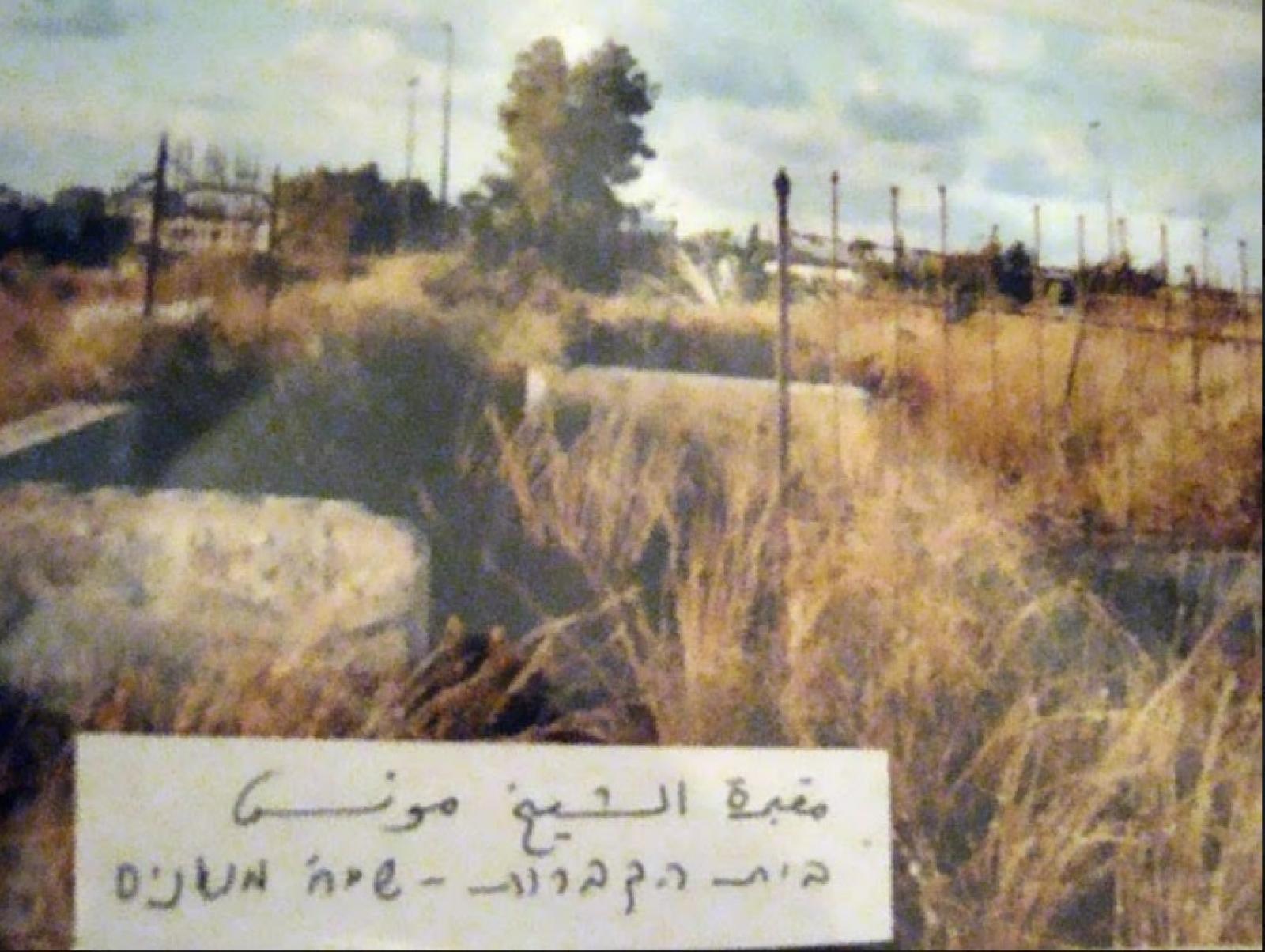The Sheikh Munis Cemetery - The university is exhuming and erasing it
Displacement and asylum: Since the end of 1947, the el-Alamein Bridge over the Auja River has become a military barrier controlled by Zionist forces, which tightened the grip on the villages north of Jaffa, including Sheikh Munis. In March 1948, Irgun forces began their operations against the villagers, after tightening the siege on them and preventing them from bringing in food supplies. The Arab villages in the area were deceived by a truce agreement out of “good neighborliness”, which the Zionist forces did not abide by, as a result the residents of al-Jammasin al-Gharbi village were expelled from their homes. With the tightening of the siege, 5 village notables were kidnapped, after they headed to the village of Iglil to bring food supplies and fuel in order to operate water pumps, which intensified the terror and intimidation practiced against the people, and scenes of Irgun forces entering the village were repeated, causing terror.
Its people were displaced until the end of March 1948. The people of Sheikh Munis sought refuge in the Triangle area, where the Jordanian forces were in control.
The village’s fame: There was an agricultural school in the village that owned 36 dunums of land and an artesian well. The residents of Sheikh Munis worked in agriculture, especially citrus cultivation and related activities. The irrigation water for its orchards was provided by the Auja River and from many artesian wells. One of its residents had a famous café near the el-Alamein Bridge – the “Hawaii Café'' on the northern bank of the Auja River.
Remaining landmarks: Many houses in the village remained standing, after the displacement of its people. They had various architectural features, and were inhabited by Jewish families in the Ramat Aviv neighborhood. On its territory lies the Tel Aviv University, and many institutions and institutes. One of its most prominent remaining landmarks is the Ibrahim Abu Kahil House, which is used today as a club for Tel Aviv University professors. It is a green-colored house with beautiful arches, and is called today the “Marcel Gordon House”. There are still other surviving landmarks across the village that can be seen in the Ramat Aviv area and its vicinity, among them the house of the Mufleh Baidis family on “Lebanon 46” street, the house of Amin Baidis inside the Eretz Israel Museum and other houses and landmarks in the area.
In 2012, Tel Aviv University, in cooperation with the Antiquities Authority, began exhuming graves, in order to prepare land plots for residential buildings to accommodate academic students. Arab activists revolted against the construction of student housing linked to Tel Aviv University over the cemetery of the abandoned Arab village of Sheikh Munis. During the operations, two already damaged graves were found, hence activists expressed concern about the remaining graves that were not yet affected by the excavation and construction operations. Bones could be seen scattered all over the ground, and the two graves referred to were found close to what is known as the university’s green house. The university then halted operations and, following examination, resumed construction work until completion over the ruins of the cemetery of the abandoned village of Sheikh Munis.
Images
